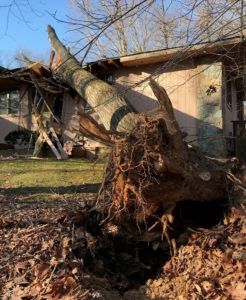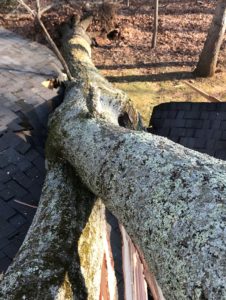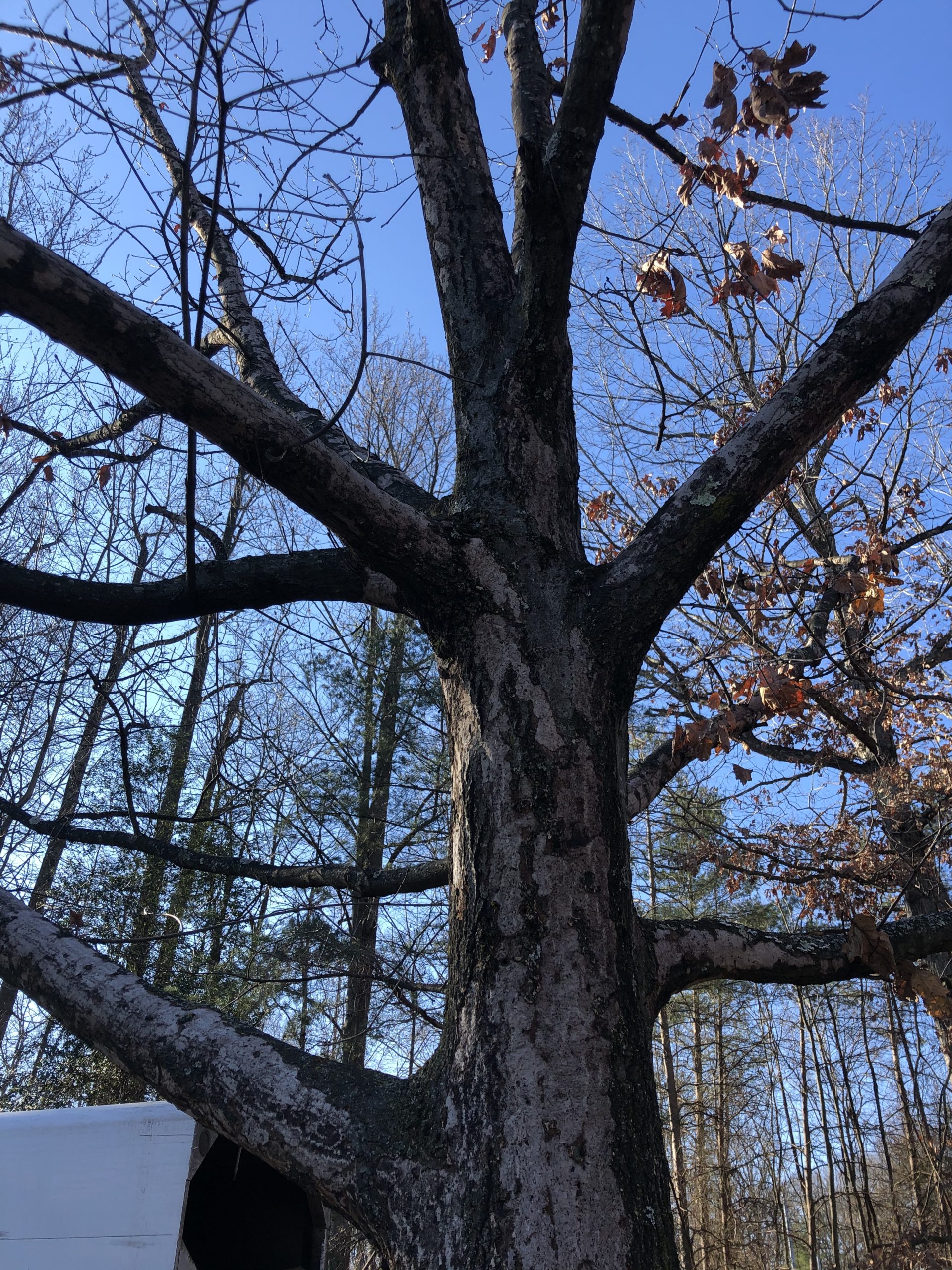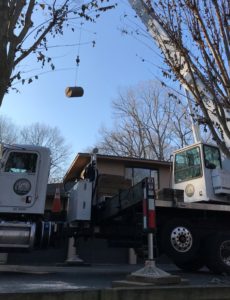Trees are beautiful plants that serve many functions. Trees are natural air filters that take in emissions and give out life giving oxygen. They can add significant property value to the modern landscape. Urban forestry involves trees and people living in close proximity to each other. A tree is very good at taking care of itself in its natural environment, whether a tree is located in the urban forestry, or deep in the wooded forest. It can be very difficult sometimes to identify a potential tree issue or hazard. Other times, it can be simple if you have a trained eye to determine some of the signs or symptoms that trees can provide. A trained arborist can evaluate your trees and provide good information and advice.
There are many reasons a tree can go into decline or die. Most tree issues can be summarized in 2 categories:
- Environmental (abiotic issues – non-living things) – such as a lack or oversupply of water, air, soil, sunlight, and minerals
- Fungi pathogen or Insects (biotic issues – living things) – usually secondary from the above underlying source or stressor condition
Northern & Southern Red Oak trees
For the purpose of this article, we are focusing on the Red Oak specifically. Red Oak trees in the Northern Virginia area commonly suffer from Oak Wilt. Oak wilt is a fungus that blocks water and nutrients from the roots to the crown. Oak wilt is usually caused from periods of drought, and/or temperature extremes. Quarantining the areas where infected trees are located is a good practice so others do not become diseased. If you have an Oak with wilt, it is critical to remove this tree, including all of the wood and debris. This is a good idea for the sake of other healthy trees that are nearby, since roots are grafted together and open wounds could be present in healthy trees for insects to carry the host pathogen and cause infection.
Symptoms of Red Oak wilt include browning of the leaves, crown tip dieback, leaf wilt, and discoloration or peeling areas of the trunks bark. Borer holes are also common to see. Look for mounding, or lifting of the earth close to the trunk area. Red Oak trees are more at risk to contract wilt than White Oaks. Once a tree is infected, it only takes a few months for the tree to die. The decline process can be very fast.
Other Oak Tree Common Issues
Hypoxylon Canker is another common tree disease in our area that can take out an Oak tree quickly. Symptoms are very easy to recognize, the bark has a bright silver/grey or dark color scattered throughout the trunk. Chances are, the trees is already dead or in serious decline. Oaks with hypoxylon canker need to be removed quickly so other oaks do not get infected. Make sure to completely remove all the wood and debris from the infected Oak tree. See below for example:
Oak anthracnose is another common disease that infects Oak trees in our area. Symptoms include curling and browning of the leaves throughout most of the tree canopy. Generally, this is a minor issue and no treatment is necessary. Once an infected tree defoliates in the Fall, the disease goes away with the leaves. This can occur multiple seasons and depends on environmental conditions.
Tree Care maintenance for Oaks
Tree care methods such as pruning should be carefully observed when assessing Oak trees. If you are pruning deadwood, crossing or rubbing limbs, or diseased limbs in a tree, that is one thing. However, cutting live branches in a Oak tree is another. Oak trees are very sensitive when cutting live limbs. No more than 20% of a tree’s canopy should be cut and there needs to be a good reason to cut a live limb greater than 2-3″ in diameter. Fertilization is a very good treatment for Oak trees. A proper nutrient mix of nitrogen with polyamino acids can be very beneficial to larger more established or declining Oak trees. Davey Arbor green PRO is a highly recommended product and the one our company uses for this service. It is best to fertilize larger or declining Oaks every 2-3 years depending on weather and tree conditions.
Some oak tree species are native to the Eastern U.S. area. Below is a list of common Oaks to our area:
Red Oaks
- Northern Red Oak (Quercus rubra)
- Southern Red Oak (Quercus falcata)
- Northern Pin Oak (Quercus ellipsoidalis)
- Sourthern Pin Oak (Quercus palustris)
- Willow Oak (Quercus phellos)
- Scarlet Oak (Quercus coccinea)
- Laurel Oak (Quercus hemisphaerica)
- Water Oak (Quercus nigra)
- Black Oak (Quercus velutina)
White Oaks
- White Oak (Quercus alba)
- Bur Oak (Quercus macrocarpa)
- Post Oak (Quercus Stellata)
- Chestnut Oak (Quercus montana)
- Swamp Chestnut Oak (Quercus michauxii)
- Chinkapin Oak (Quercus muehlenbergii)
- Overcup Oak (Quercus lyrata)
Other Oaks
- Saw Tooth Oak (Quercus acutissima)
- Swamp White Oak (Quercus bicolor)
So Why is it important to evaluate Oak trees?
Trees, especially Oaks, can uproot and be dangerous if they are not healthy and are in close proximity to your house. Even if they appear to be healthy, a big wind storm can take them out. Since many tree issues are underground and not visible, there is not always visual evidence that a tree is healthy or not. As described above, there are certain factors an arborist will look for to determine the health of a tree. The pictures below are an uprooted Red Oak that likely fell from lack of structural roots due to oak wilt. When you see that there are heavily decayed (black or dark brown) roots, or barely any roots at all at the base of the rootball, this shows that the root system failed. High winds and wet conditions caused the scenario below. It is highly beneficial to have a certified arborist evaluate your trees on a yearly basis. A good arborist will provide accurate and honest advice. If you have a Red Oak tree that is leaning toward your house, it is usually our advise to have that tree removed. Sometimes the answer is, that tree is just too close and precarious for comfort.



